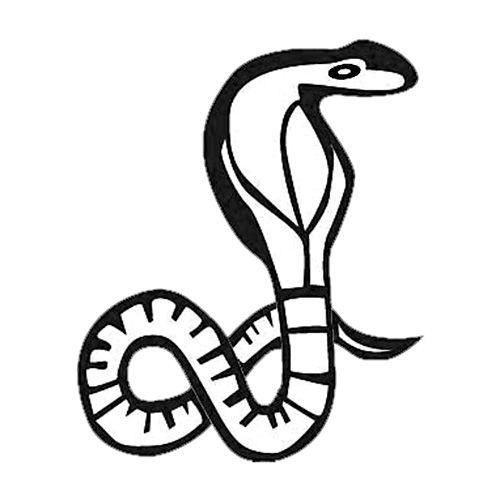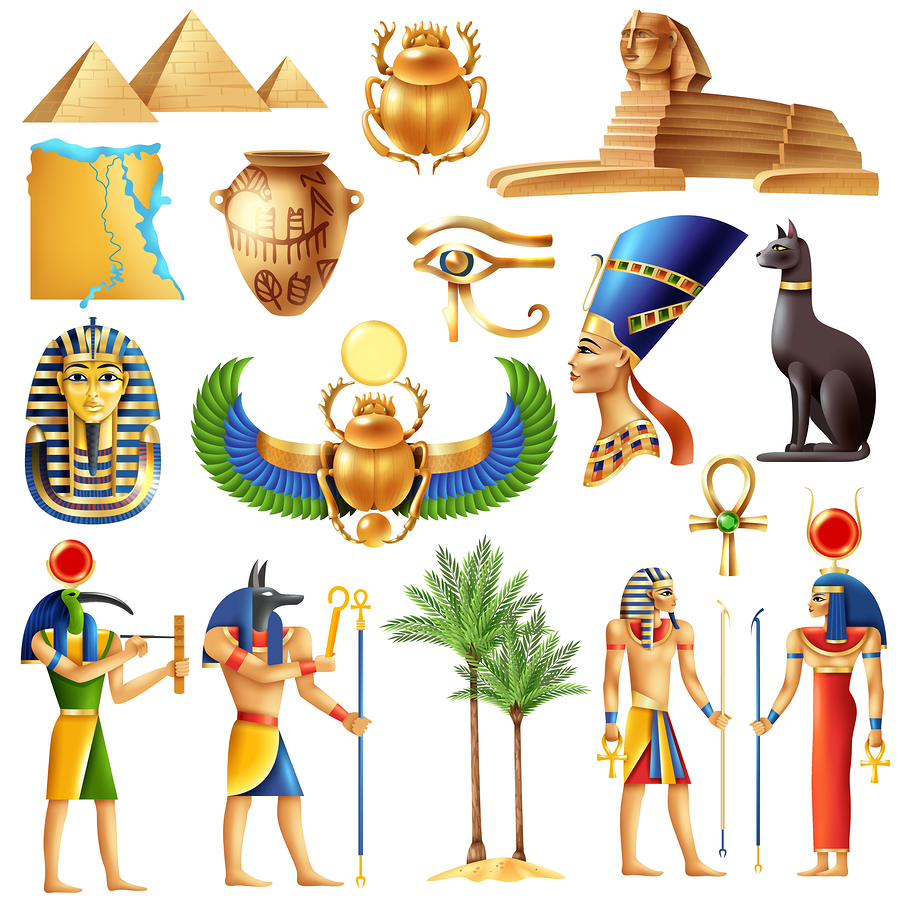Ancient Egypt was a land of mystic culture and tradition. Egyptians believed in life after death. Eerie aspects of life were practiced a lot. Ancient Egypt was a land of spiritual activities. It made an essential impact on the lives of the people. They depicted their culture in the form of artistic architecture, symbols, and various other things. Hence, they believed that these 20 Most Important Ancient Egyptian Symbols and cultural elements would offer them good fortune and protection.
The Egyptian fetish towards magic and supernatural inclination is profound. They are well known for this all over the world.
Religion in ancient Egypt was integrated into people’s daily lives. The gods were present at one’s birth. Nevertheless, the spiritual world was ever-present in the physical world. This understanding was symbolized through images of art and architecture. Amulets, statuary, and the objects were used by nobility and clergy in the performance of their duties.
Egyptian symbols usually depict the concept of life after death. It also represents Love, power, soul, weakness, spirit, and above all, Religion. Let’s talk about all the important ancient Egyptian Symbols is detail.
Table of Contents
1. The Ankh- Most Important ancient Egyptian Symbols
The ankh is a cross with a looped top. Besides the concept of life, it also symbolized eternal life. The morning sun, the male and female principles, the heavens, and the earth are other representations. Its form embodied these concepts in its key-like shape. The ankh symbolized the holding of the key to the secrets of existence. The union of opposites and the extension of earthly life to eternal were all represented in the form of the looped cross. The symbol was taken up by the Christian faith in the 4th century CE as a symbol for their God.
The origin of the ankh symbol is unknown. But, the Egyptologist E. A. Wallis Budge claims it may have developed from the tjet, the ‘Knot of Isis. Female deities were popular and considered more powerful (as in the example of the goddess Neith). In the early history of Egypt, the ankh did develop from the tjet, but this theory is not universally accepted.
The ankh finds its association with the cult of Isis. However, and as her popularity grew, so did that of the symbol.
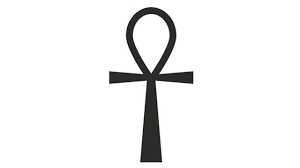
2. Djed- Most Important ancient Egyptian Symbols
The djed column was an Egyptian hieroglyph that represented stability. It was often displayed in combination with the was the staff and the ankh, which created a combined meaning of strength, success, and long life. Although understood as representing stability, the symbol served to remind one of the close presence of the gods as it also referenced the God Osiris and so was linked with resurrection and eternal life. The djed represents God’s backbone and appears on the bottom of sarcophagi. This helps the newly arrived soul stand up and walk into the afterlife.
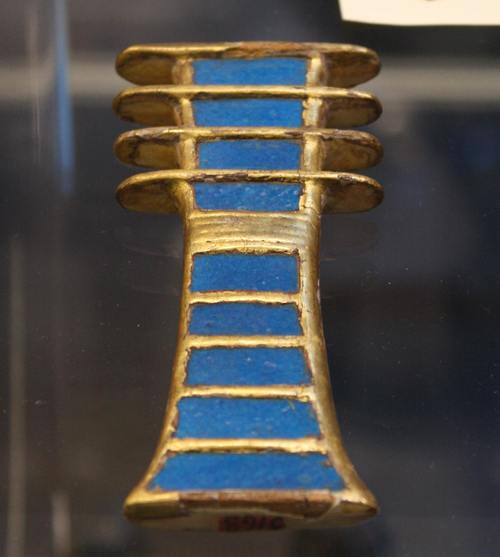
3. Wadjet Eye( Eye of Horus)
The Eye of Horus, also known as the Wadjet Eye, was an important ancient Egyptian symbol. It was a symbol of protection against illness, danger, evil spirits, envy, etc. The Egyptians believed that it offered good health and royal power. The Udjat is one of the most important ancient Egyptian Symbols.
The symbol was often a representation of knowledge, enlightenment. However, there are other interpretations, as well. The Eye might face left or right. Perhaps the most famous depiction of the symbol is in an image of Aleister Crowley.
Some connect this symbol with the Eye of Providence, which exists within Christian and deist contexts. The watchful Eye of a superior power surveying humanity. The conspiracy theorists emphasized on this connection. These theorists believed in mysticism and magic which bears textual evidences.-
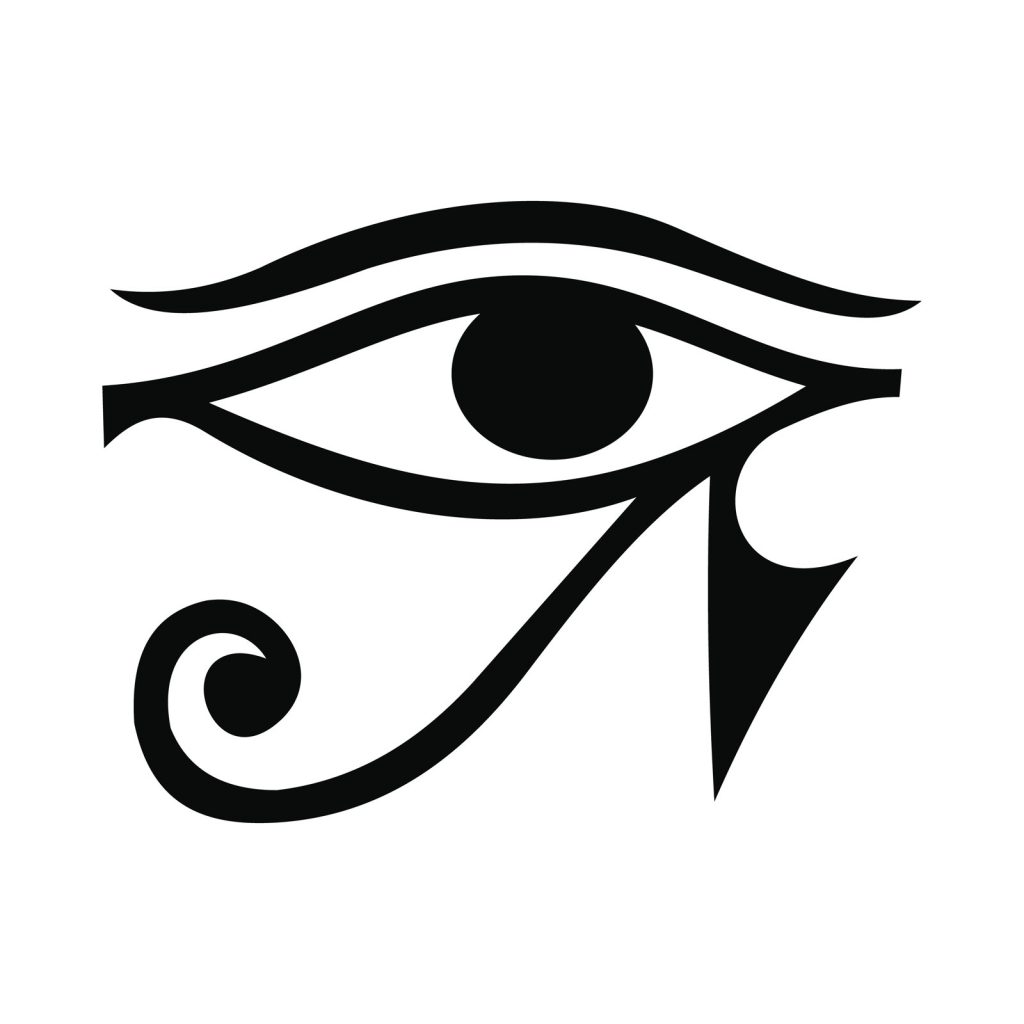
4. Eye of Ra- Most Important ancient Egyptian Symbols
The Eye of Ra is often the subject of controversy. Most of the facts about it still not discovered. Some historians believe that the Right Eye of the Horus is similar to The Eye of Ra.
As one of the most important ancient Egyptian symbols, it was personified vividly. It was a personification of many ancient goddesses like Wadjet, Hathor, Mut, Sekhmet, and Bastet. It also symbolizes The Sun in the old Sun mythology were it is ‘Re’.
The Eye of Ra is more than a reference to a part of a god. Its distinct element in Egyptian mythology, a feminine power that works Ra’s will. It was most often in the hands of a variety of different goddesses such as Hathor and Sekhmet. A sun disk with a cobra surrounding the Eye is a representative of the symbol.
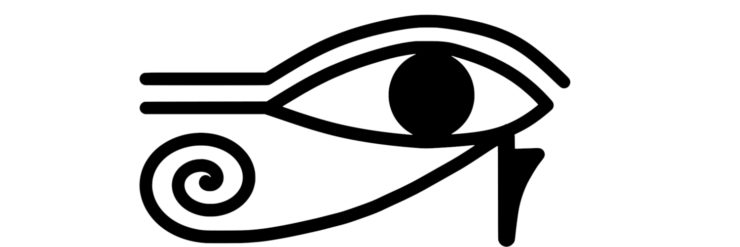
5. ‘Was’ Symbol
The Was symbol in the ancient Egyptian culture represents the dominion of God. It represents the supremacy and power of the almighty. The Egyptians believe that it brings prosperity and good luck to the king. Often used as a symbol of good Omen, for the kings’ and his empire. Its orientation was that of a straight shaft, a crooked handle in the shape of an animal head and a forked base.
Hathor, associated with the cow, holds the wand forked at the bottom in the shape of cow horns. Isis has a similar object but with the traditional fork representing duality. The scepter of Ra-Horakhty (‘Horus in the Horizon’), the God of the rising and setting Sun. The color blue symbolizes the sky. While the sun god Ra represents a snake attached to it symbolizing rebirth, as the Sun rose every day in the morning.
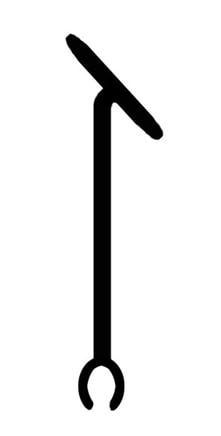
6. The Scarab Beetle
The scarab is the famous beetle image seen in Egyptian art and iconography. It represents the Scarabaeus sacer, a species of the dung beetle. The dung beetle finds its association with the gods. It is because it rolled dung into a ball in which it laid its eggs. Henceforth, the waste served as food for the young when they hatched. In this way, new life came.
Scarabs became popular amulets during the First Intermediate Period (2181-2040 BCE). It remained so for the duration of Egypt’s history until the rise of Christianity.
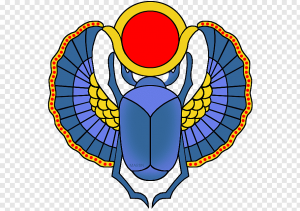
7. Cartouche
The Cartouche is an important ancient Egyptian Symbol that represents a ‘Nameplate’. It has close links to the Sun. It symbolizes protection against evil spirits, both in life and afterlife. Initially, it had a circular shape. But later shapes of an oval with a horizontal bar shows that was similar to a cartouche.
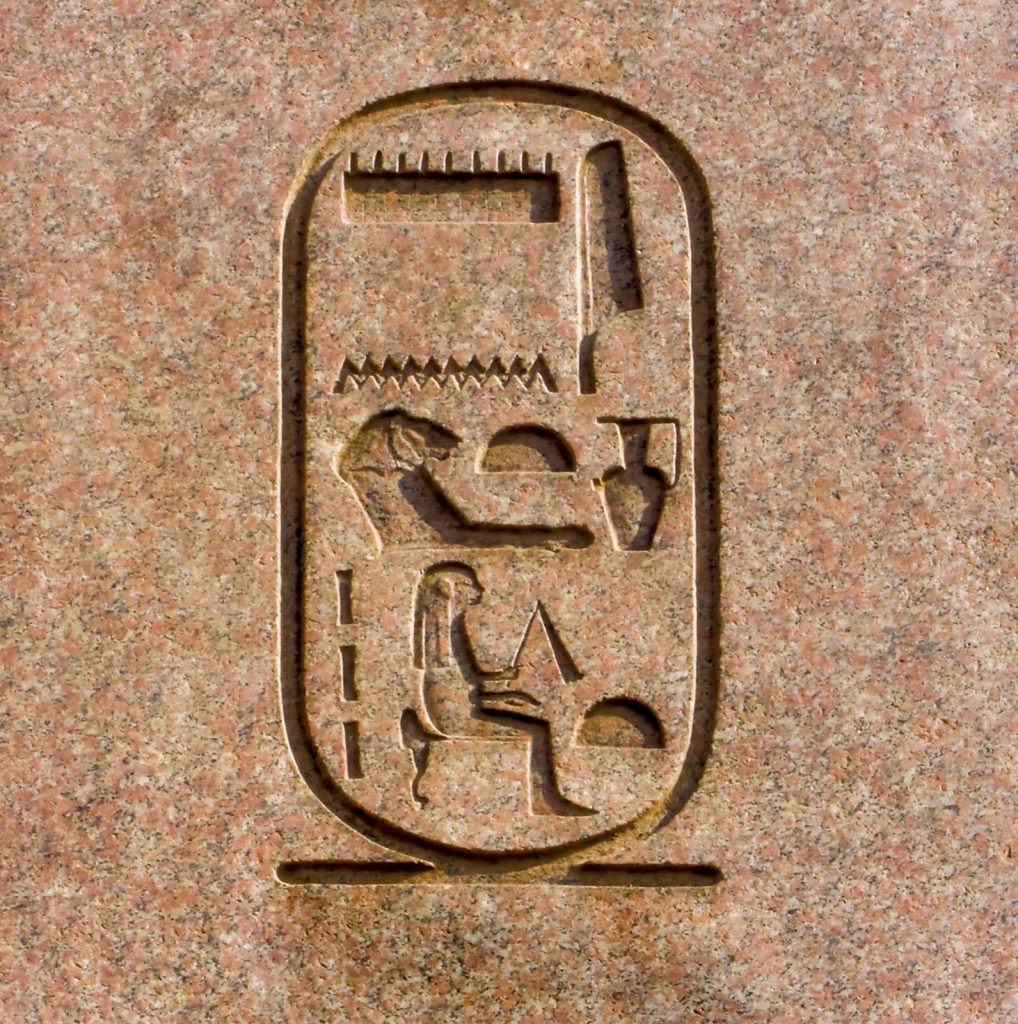
8. The Lotus Symbol
One of the most important ancient Egyptian Symbols, the Lotus Flower, was sacred. This plant has its association with rebirth. Firstly, this is a consequence of it supposedly retracting into the water at night, and emerging a fresh in the Sun the next day (see the introduction for how a lotus plant comes into bloom).
The Egyptians, therefore, associated the lotus flower with the Sun, which also disappeared in the night, only to re-emerge in the morning. Thus the lotus came to symbolizes the Sun and the creation. In many hieroglyphics works, the lotus depicts emergence from Nun (the primordial water) bearing the Sun God.
Secondly, the lotus flower meaning to the Egyptians was the way that it finds its usage as a symbol for the unification of the two Egyptian kingdoms. That is to say, the bonding of upper and lower Egypt.
For a long time, the lotus was in the hieroglyphics and art of upper Egypt, whereas in lower Egypt, the Papyrus plant was notably in abundance. Lastly, the pictures of lotus and Papyrus that grow together and become inter-wound with each other became a symbol of the bringing together of the two kingdoms.
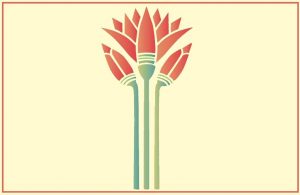
9. Uraeus Symbol
The uraeus or the rearing cobra is another vital sign of royal regalia in ancient Egypt. It is on headdresses, crowns, and the brow of statues of kings and queens and even extending to deities. It is an important symbol. Firstly, it is a symbol of the legitimacy of the king’s rule, known as ‘Weret Hekau’ (usually with a human head), which means Great of Magic. Secondly, the uraeus is an Egyptian spitting cobra that the people use interchangeably with the ideas of sovereignty, deity, royalty, and divine authority. Lastly, the golden symbol finds its place mostly in the royal garb and even in individual burial sites.
In hieroglyphs, the uraeus had several varieties and interpretations. It may refer to a priestess, a goddess-like Menhit and Isis, or a shrine of a goddess.
Initially, the uraeus is the symbol of the Lower Egypt patron goddess, Wadjet. The Egyptians believe that she takes the form of the cobra on land, and having her on the crown of the king would signify her protection from enemies as well as the extension of rule over the entire Lower Egypt. During the unification of the country, the uraeus merged with the vulture – the symbol of Upper Egypt’s patron deity, Nekhbet. Together, the two creatures became the nebty or the two ladies protecting the pharaoh.
